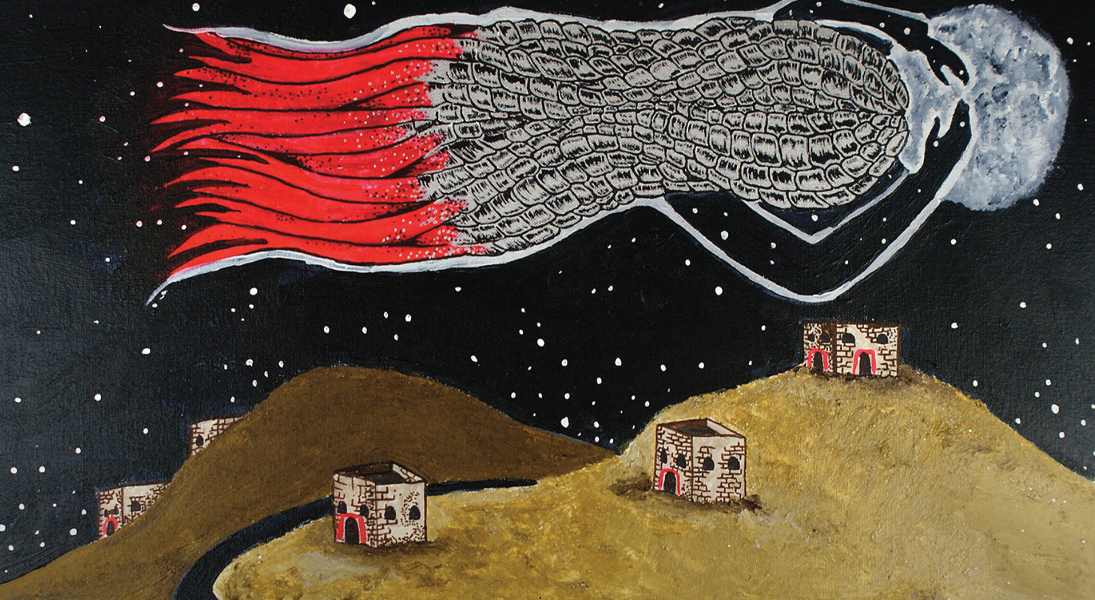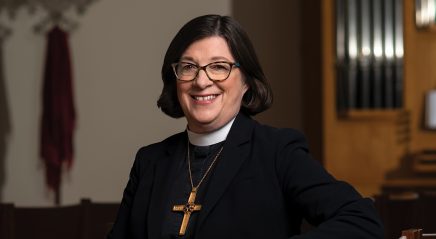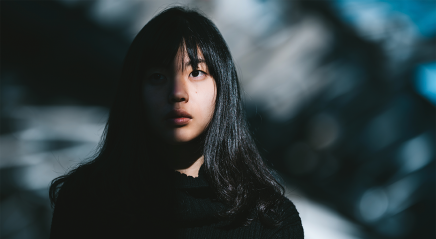When Beckah Selnick read the July 2020 Living Lutheran column “God’s Beautiful Dark Works”—written by her mother, ELCA Presiding Bishop Elizabeth Eaton—it reminded her of a children’s book. “It could be that I have been reading a lot of children’s books during this season of my life as the mom of a 3-year-old, but when I read the words, the images they conveyed were so distinct and powerful,” said Selnick, a writer and podcaster.
With co-author Sharei Green, currently pursuing a Master of Divinity degree at the Lutheran School of Theology at Chicago, and illustrator Nicolette Peñaranda, ELCA program director for African Descent Ministries, Selnick began work on a children’s book, God’s Holy Darkness (Beaming Books, July 2022).
Living Lutheran spoke to the book’s three creators about depicting the story of God in a way that celebrates the beauty of darkness, blackness and night.
Living Lutheran: Could you tell readers about God’s Holy Darkness?
Peñaranda: I like to think of God’s Holy Darkness as a spiritual tool challenging the dark/light binary that we are taught in our faith. It reminds us that darkness is beautiful, creative, powerful and bold. It celebrates what God does in the dark, and we hope that others will rejoice in darkness too.
How did you decide to work together on the book?
Green: Beckah, as a white woman, understood that this wasn’t a story that she should tell alone, so she brought me in on the project. . . . Like a true ally, she wasn’t just looking for Black labor, she was looking for a partner to tell a story that was seemingly missing from the public narrative around race and faith. . . . I immediately thought of Nic [for illustration]. Outside of being a good friend, I knew Nic to be a brilliant artist and thought it would be a gift to the project to bring her unique style.
Peñaranda: I knew I wanted God to be [depicted as] feminine, thick and filled with silver locks. All of these features are the things we tend to not associate with God when we try to create human images. But how powerful is it to think of a God with hips wide enough to birth the universe? What about a God with hair that flows through the night sky? I want kids to see people with locks and think of our divine creator.
How did you decide on the specifics of what to include in a book on darkness?
Selnick: Darkness and blackness and night usher in so many holy and beautiful moments in the story of God. This book takes readers through some of the most well-known stories in the Old and New Testaments where God’s holy darkness has been prominent all along.
“It’s the kind of Bible book I wish I had growing up, when I needed to be reminded that my Blackness is beautiful and good.”
Green: We didn’t have to do a deep dive to find obscure verses hidden in the text. Many of the verses highlighted are a part of well-known stories. To me, our job was just to invite folks into a different, or maybe broader, understanding of what was already there.
What can Lutherans, in particular, take away from the book?
Peñaranda: A new perspective. . . . How do we release ourselves from the bondage of anti-Black theology and embrace the beautiful creation that is made in darkness? I think Lutheranism could feel all the more rich [by doing so].
Selnick: We as Lutherans are members of a “both/and” church, but we live in an “either/or” society. It is becoming increasingly clear that strict binaries do not serve us and do not foster in the good news of Jesus. God’s Holy Darkness breaks down light/dark binaries as they appear in beloved Bible stories, but it can also serve as an introduction or inspiration for Lutherans, and people everywhere, to recognize these boundaries elsewhere and push against them.
How do you hope readers will engage with the book?
Green: I want folks to take away the celebration of the diverse imagery in our sacred text in a way that is affirming for children of darker hues who have been internalizing negative views of blackness and darkness. It’s the kind of Bible book I wish I had growing up, when I needed to be reminded that my Blackness is beautiful and good.
I hope BIPOC (Black, Indigenous, people of color) folks will use this book to celebrate themselves and their communities. I hope the children of the many diasporas read this and feel affirmed in their goodness, and reminded that they are God’s beloved, that they, too, are part of the “imago Dei.” I hope white folks use this to celebrate their BIPOC siblings.
I also hope they use this to examine their implicit biases and do the necessary work to shape children who grow up understanding that blackness and darkness and night are holy and good.
Peñaranda: I hope this book becomes a bedtime story. I hope when children say they are scared of the dark, their caregiver picks up this book and reminds them of the calm in darkness. I hope Sunday schools and children’s sermons and preaching series are inspired by this book . . . that folks feel called to reimagine darkness together and in community.









